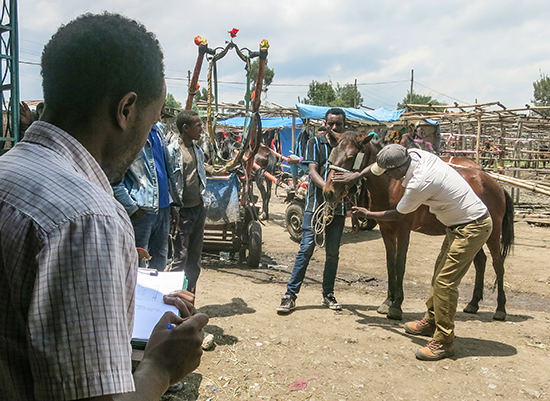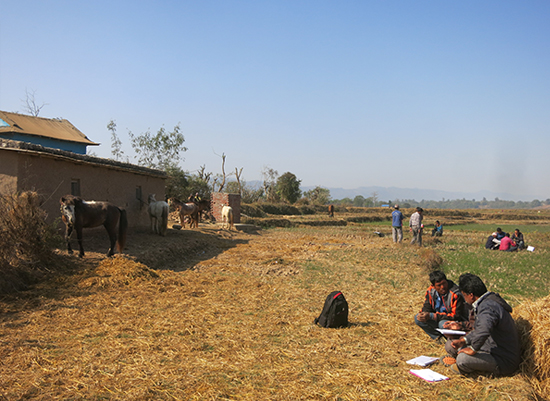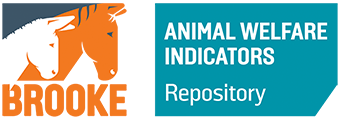Why do we assess welfare?
Identify the nature of welfare issues in equine populations
There is often variation in welfare status between working equine contexts. Identifying welfare strengths and weaknesses in a given population can inform decision-making as to which intervention activities, staff skills and resources will be most appropriate to improve welfare.
Identify the prevalence of different welfare issues in equine populations
Using standardised indicators and assessors enables all animals to be assessed on a comparable basis. Data can be analysed cumulatively and prevalence of each welfare issue calculated at a group level. This supports evidence-based welfare issue prioritisation.
Compare welfare status between different locations or animal groups
Using standardised indicators and assessors enables comparisons and bench-marking between different locations. Relative welfare strengths and weaknesses at different locations can be ascertained, enabling intervention activities to be tailored accordingly. This can also direct research into risk factors for poor welfare and identification of positive welfare practices.

"Welfare assessment often guides us to important research questions."
Ruth Jobling, Research Coordinator, Brooke UK
Identify groups of animals in greatest need
Collecting descriptive information (e.g. work type, sex, species, age) in addition to welfare measures allows data to be analysed according to these variables and potential risk factors to be extracted. Identification of high risk animal groups allows intervention activities to be targeted towards those in greatest need.
Identify seasonal variation in welfare issues
Measuring at different times of year enables identification of welfare variation due to climatic or work season. Intervention activities can be tailored according to animals’ seasonal needs.
Provide a welfare baseline for intervention or research activities
Using standardised indicators and assessors enables comparable data between different points in time. Data can be collected at an early stage to provide an indication of initial welfare status before any intervention or research activity commences.
Provide a way of monitoring welfare impact of intervention activities or changes in management practices
Animals can be re-assessed at various stages throughout a project or research study and compared with baseline data to identify:
a) whether desired positive welfare changes have been achieved and to what extent
b) unintended negative consequences of project activities
c) unexpected positive consequences of project activities
d) progress towards achieving targets.
Generate welfare targets or exit criteria
Standardised indicators can provide performance targets for welfare improvement projects, and criteria for making evidence-based decisions about when to discontinue a project or research study.


Assess sustainability of welfare improvement activities
Welfare can be periodically re-assessed to monitor the extent to which welfare changes have been sustained after a project or research study finishes. This helps inform whether threshold exit criteria were appropriate, and gauge sustainability of welfare impacts.
Triangulate with information from other sources
Welfare indicators can be consolidated and compared with information from other sources (e.g. environmental or owner-related factors) to obtain a broader picture of the relationship between interconnected factors and their implications for welfare.
